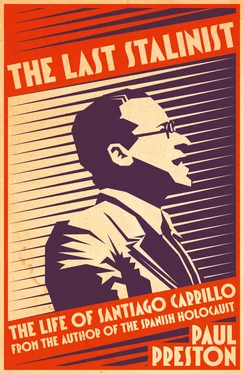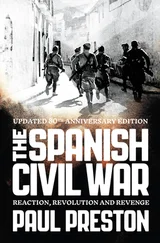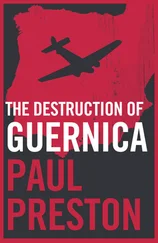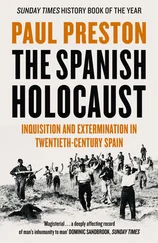In the wake of the Russian revolution, continuing inflation and the rising unemployment of the post-1918 depression fostered a revolutionary group within the Socialist movement, particularly in Asturias and the Basque Country. Anguiano and others saw the events in Russia and the failure of the 1917 strike as evidence that it was pointless to work towards a bourgeois democratic stage on the road to socialism. Between 1919 and 1921, the Socialist movement was to be divided by a bitter three-year debate on the PSOE’s relationship with the Communist International (Comintern) recently founded in Moscow. The fundamental issue being worked out was whether the Spanish Socialist movement was to be legalist and reformist or violent and revolutionary. The pro-Bolshevik tendency was defeated in a series of three party congresses held in December 1919, June 1920 and April 1921. In a closely fought struggle, the PSOE leadership won by relying on the votes of the strong UGT bureaucracy of paid permanent officials. The pro-Russian elements left to form the Spanish Communist Party. 11Numerically, this was not a serious loss but, at a time of grave economic and social crisis, it consolidated the fundamental moderation of the Socialist movement and left it without a clear sense of direction.
Indalecio Prieto had become a member of the PSOE’s executive committee in 1918. 12He represented a significant section of the movement committed to seeking reform through the electoral victory of a broad front of democratic forces. He was appalled when the paralysis within the Socialist movement was exposed by the coming of the military dictatorship of General Primo de Rivera on 13 September 1923. The army’s seizure of power was essentially a response to the urban and rural unrest of the previous six years. Yet the Socialist leadership neither foresaw the coup nor showed great concern when the new regime began to persecute other workers’ organizations. A joint PSOE–UGT note simply instructed their members to undertake no strikes or other ‘sterile’ acts of resistance without instructions from their two executive committees lest they provoke repression. This reflected the determination of both Besteiro and Largo Caballero never again to risk the existence of the UGT in direct confrontation with the state, especially if doing so merely benefited the cause of bourgeois liberalism. 13
It soon became apparent that it would be a short step from avoidance of risky confrontation with the dictatorship to active collaboration. In view of the Socialist passivity during his coup, the dictator was confident of a sympathetic response when he proposed that the movement cooperate with his regime. In a manifesto of 29 September 1923, Primo thanked the working class for its attitude during his seizure of power. This was clearly directed at the Socialists. It both suggested that the regime would foster the social legislation longed for by Largo Caballero and the reformists of the UGT and called upon workers to leave those organizations which led them ‘along paths of ruin’. This unmistakable reference to the revolutionary anarcho-syndicalist CNT (Confederación Nacional del Trabajo) and the Spanish Communist Party was a cunning and scarcely veiled suggestion to the UGT that it could become Spain’s only working-class organization. In return for collaborating with the regime, the UGT would have a monopoly of trade union activities and be in a position to attract the rank and file of its anarchist and Communist rivals. Largo Caballero was delighted, given his hostility to any enterprise, such as the revolutionary activities of Communists and anarchists, that might endanger the material conditions of the UGT members. He believed that under the dictatorship, although the political struggle might be suspended, the defence of workers’ rights should go on by all possible means. Thus he was entirely open to Primo’s suggestion. 14In early October, a joint meeting of the PSOE and UGT executive committees agreed to collaborate with the regime. There were only three votes against the resolution, among them those of Fernando de los Ríos, a distinguished Professor of Law at the University of Granada, and Indalecio Prieto, who argued that the PSOE should join the democratic opposition against the dictatorship. 15
Besteiro, like Largo Caballero, supported collaboration, albeit for somewhat different reasons. His logic was crudely Marxist. From the erroneous premise that Spain was still a semi-feudal country awaiting a bourgeois revolution, he reasoned that it was not the job of the Spanish working class to do the job of the bourgeoisie. In the meantime, however, until the bourgeoisie completed its historic task, the UGT should seize the opportunity offered by the dictatorship to have a monopoly of state labour affairs. His argument was built on shaky foundations. Although Spain had not experienced a political democratic revolution comparable to those in England and in France, the remnants of feudalism had been whittled away throughout the nineteenth century as the country underwent a profound legal and economic revolution. Besteiro’s contention that the working class should stand aside and leave the task of building democracy to the bourgeoisie was thus entirely unrealistic since the landowning and financial bourgeoisie had already achieved its goals without a democratic revolution. His error would lead to his ideological annihilation at the hands of extreme leftist Socialists, including Santiago Carrillo, in the 1930s.
Prieto and a number of others within the Socialist Party, if not the UGT, were shocked by the opportunism shown by the leadership of the movement. They accepted that strike action against the army would have been self-destructive, sentimental heroics that would have risked the workers’ movement merely to save the degenerate political system that sustained the monarchy re-established in 1876 after the collapse of the First Republic. However, they could not admit that this justified close collaboration with it. They went largely unheard and the integration of the national leadership with the dictatorship was considerable, the UGT having representatives on several state committees. Wenceslao Carrillo was the Socialist representative on one of the most important, the State Finances Auditing Commission (Consejo Interventor de Cuentas del Estado). 16Most UGT sections were allowed to continue functioning and the UGT was well represented on a new Labour Council. In contrast, anarchists and Communists suffered a total clampdown on their activities. In return for refraining from strikes and public protest demonstrations, the UGT was offered a major prize. On 13 September 1924, the first anniversary of the military coup, a royal decree allowed for one workers’ and one employers’ representative from the Labour Council to join the Council of State. The UGT members of the Labour Council chose Largo Caballero. Within the UGT itself this had no unfavourable repercussions – Besteiro was vice-president and Largo himself secretary general. The president, the now ageing and infirm Pablo Iglesias, did not object. However, there was a certain degree of outrage within the PSOE.
Prieto was appalled, rightly fearing that Largo Caballero’s opportunism would be exploited by the dictator for its propaganda value. In fact, on 25 April 1925, Primo did cite Largo Caballero’s presence on the Council of State as a reason for ruling without a parliament, asking rhetorically, ‘why do we need elected representatives?’ 17When Prieto and De los Ríos wrote to the PSOE executive committee urging the need for distance between party leaders and the military directorate, they were told that Largo Caballero’s nomination was a UGT matter. This was utterly disingenuous since the same individuals made up the executive committees of both bodies which usually held joint deliberations on important national issues. In the face of this dishonesty, Prieto resigned from the committee. 18Inevitably, given Largo Caballero’s egoism, his already festering personal resentment of Prieto was cast in stone. 19It would continue throughout the years of the Republic and into the Civil War and would later influence Santiago Carrillo. When his own political positions came to be opposed to those of Prieto from late 1933 onwards, Carrillo would adopt an aggressive hostility towards him that fed off that of his mentor. This was to be seriously damaging to the Republic at the time and to the anti-Francoist cause after the Civil War.
Читать дальше












